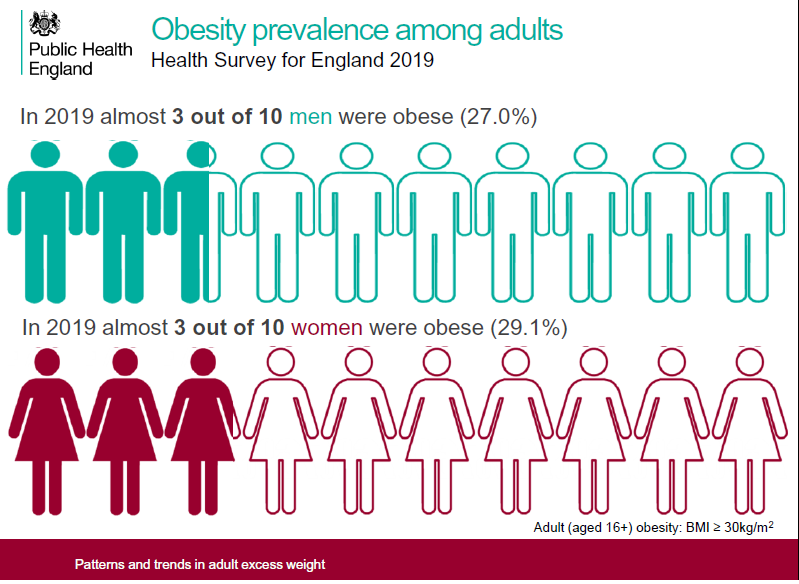epidemiology
Last edited 06/2021 and last reviewed 04/2022
Obesity is the commonest nutritional disorder in Western societies.
More than 30% of adult Americans are obese (>20% above their ideal body weight).
In the UK the prevalence of obesity is lower but is rising (1):
- around 62% of adults were overweight (BMI> =25 kg/m^2) or obese (BMI>
=30 kg/m^2) (67% of men and 57% of women)
- prevalence of obesity is similar among men and women, but men are more
likely to be overweight (42% of men compared to 32% of women)
- prevalence of obesity is similar among men and women, but men are more
likely to be overweight (42% of men compared to 32% of women)
- in England, the prevalence of obesity among adults rose from 15% to 25%
between 1993 and 2012. The rate of increase has slowed down since 2001, although
the trend is still upwards. The prevalence of overweight has remained broadly
stable during this period at 37-39%
- the rapid increase in the prevalence of overweight and obesity has meant
that the proportion of adults in England with a healthy BMI (18.5 - 24.9)
decreased between 1993 and 2012 from 41.0% to 32.1% among men, and 49.5% to
40.6% among women
- in England, currently 24.7% of adults (aged 16 years and over) are obese (HSE 2012). By 2050 obesity is predicted to affect 60% of adult men, 50% of adult women and 25% of children (Foresight 2007).
In England the trend for increasing obesity over time is evident (2):

The proportion of obese adults in England has been stated as (2):

There is a strong relationship between social factors and obesity (1,2,3):
- in the developed world lower social class is associated with higher rates of obesity, particularly among women
- in the underdeveloped world higher social class is associated with higher rates of obesity
Reference:
- Public Health England. Obesity - UK prevalence and trends (accessed 28/6/14)
- Public Health England (January 2021). Patterns and trends in adult excess weight.
- British Heart Foundation. Factfile 7/99.